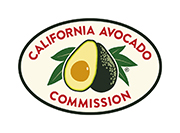Identification of Predatory Mites Associated with Persea Mite in Mexico and Genetic Analyses of Native and Invasive Persea Mite Populations
Molecular analyses of field-collected persea mite (Oligonychus perseae) specimens established that (1) ITS-2 provides reliable Oligonchyus species identification and (2) COI analyses were able to discern that California’s persea mite population originated from central Mexico. A comparison of predatory mite species (Phytoseiidae) from Mexico and California as originally intended was limited by challenges in amplifying COI/ITS-2 DNA from individual specimens but significant progress was made in optimizing non-destructive DNA extraction protocols for this taxonomic group.
Management and resistance monitoring of avocado thrips and persea mite
The current CAC project over the 5-year period 2007-2012 focused on continuing to monitor for avocado thrips and persea mite resistance to abamectin and on developing pesticides in other classes of chemistry that could be used in rotation with abamectin; efficacy data were generated to support registration and working with pest control advisors (PCAs), we began to evaluate the strengths and weaknesses of each of these new products.
Pest Management Guidelines for Agriculture: Avocado
These practices are recommended for a monitoring-based IPM program that enhances the use of IPM practices to reduce the risks of pesticides on the environment and human health. This year-round IPM program covers the major pests of avocados in California. Details on carrying out each practice, example monitoring forms, and information on additional pests can be found in the Avocado Pest Management Guidelines.
Surveying Avocados in the Baja Peninsula for Pests that May Enter California
Over the period 23-25 January 2011 residential areas in Tijuana Mexico were surveyed for the presence of avocado trees, and when possible trees were inspected for arthropods associated with trees. Google Earth was used to pre-select six separate residential areas that showed high levels of greenery (i.e., parks, and well maintained residential gardens). In these six areas, 267 residential street blocks were surveyed. From these blocks, a total of 634 properties were inspected from the road. The percentage of street blocks with avocados in pre-selected sections of Tijuana ranged from 23% to 45% of blocks having at least one tree. A total of 80 avocado trees were found from these surveys. Of surveyed properties, 10% or 64 properties had at least one avocado tree. The number of avocados per property ranged from 1 to 5 trees. The GPS coordinates were recorded for each tree and when possible foliage was inspected for avocado pests.
Development of a Binomial Sampling Plan for Persea Mite
Feeding persea mites can cause extensive foliar damage to avocados and this pest is typically controlled with pesticides. Sustainable pesticide-based control programs must rely on accurate monitoring of persea mite numbers in orchards to determine if pest populations are approaching densities which require control thereby preventing economic damage to trees. Limited applications of pesticides at critical times will significantly delay resistance development by persea mite, save growers money, and promote IPM as a marketing tool for California-grown avocados.
Management and Resistance Monitoring of Avocado Thrips and Persea Mite
Persea mite was discovered attacking avocados in southern California in 1990. Avocado thrips was found in two isolated avocado groves, one in Orange Co. and the other in Ventura Co., in June 1996. Since then, these have become the two major arthropod pests of avocados in California although populations of each can vary in severity a good deal from year to year. Although it was an unusual year, according to Witney (2009), estimates of direct losses from avocado thrips damage to fruit and control costs for this insect combined to exceed $50 million in 2006.
- 1 of 2
- Load More


